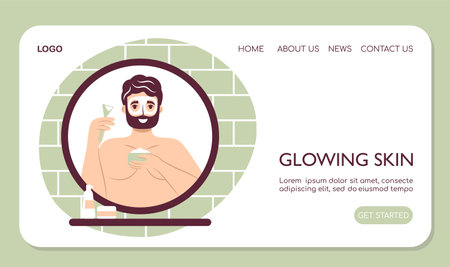1. Understand Your Pets Coat Type
Before choosing the right shampoo and conditioner for your pet, its essential to understand their coat type. Different coat types require specific grooming products to keep them healthy, shiny, and tangle-free.
Identifying Your Pet’s Coat Type
Pets have a variety of coat types, and each one has unique grooming needs. Here’s a simple guide to help you determine which category your pet falls into:
| Coat Type | Description | Shampoo & Conditioner Needs |
|---|---|---|
| Short Coat | Smooth and close to the skin, sheds minimally. | Mild shampoos with moisturizing properties to maintain skin health. |
| Long Coat | Requires regular brushing to prevent tangles and mats. | Detangling or conditioning shampoos to reduce knots and keep fur soft. |
| Curly Coat | Tightly curled fur that can trap dirt and moisture. | A moisturizing shampoo with deep conditioning to prevent matting. |
| Double Coat | A dense undercoat with a longer topcoat, sheds seasonally. | Shed-control or deep-cleaning shampoos to remove loose hair. |
The Importance of Choosing the Right Products
Your pets coat type determines how often they need baths and what kind of shampoo and conditioner will work best. Using the wrong product can lead to dry skin, irritation, or excessive shedding. By selecting a formula designed for their specific coat type, you can ensure their fur stays clean, healthy, and easy to manage.
2. Consider Skin Sensitivities and Allergies
Just like humans, pets can have sensitive skin or allergies that require special care. Using the wrong shampoo or conditioner may cause irritation, excessive dryness, or even worsen existing skin conditions. If your pet frequently scratches, has dandruff, or suffers from redness and irritation, it’s essential to choose a product designed for sensitive skin.
Look for Hypoallergenic or Medicated Shampoos
If your pet has allergies or sensitive skin, opt for hypoallergenic shampoos. These are formulated without harsh chemicals, artificial fragrances, or dyes that could trigger reactions. Medicated shampoos can also help with specific skin issues such as fungal infections, bacterial problems, or severe itching.
Common Skin Issues and Recommended Shampoo Types
| Skin Issue | Recommended Shampoo Type |
|---|---|
| Dry, flaky skin (dandruff) | Moisturizing or oatmeal-based shampoo |
| Frequent itching | Hypoallergenic shampoo |
| Bacterial or fungal infections | Medicated shampoo (consult your vet) |
| Sensitive skin with redness | Aloe vera or chamomile-infused shampoo |
| Persistent allergies | Sulfate-free hypoallergenic shampoo |
Avoid Harsh Ingredients
Certain ingredients in pet shampoos can be too harsh for sensitive skin. Always check the label and avoid products containing sulfates, parabens, alcohols, and artificial fragrances. Instead, look for natural ingredients like aloe vera, coconut oil, and oatmeal, which are known to be soothing and gentle.
Signs Your Pet May Need a Gentler Shampoo
- Excessive scratching: Your pet constantly itches after baths.
- Dandruff or flaky skin: White flakes appear on their coat.
- Irritated red patches: Skin looks inflamed after bathing.
- Bald spots: Hair loss occurs in certain areas.
- A strong odor returns quickly: This may indicate an underlying skin condition.
When to Consult a Veterinarian
If your pet’s skin issues persist despite using gentle shampoos, consult a veterinarian. They can recommend medicated shampoos or treatments tailored to your pet’s specific needs.

3. Check the Ingredients
When choosing a shampoo and conditioner for your pet, always take a close look at the ingredients list. Some products contain harsh chemicals that can cause skin irritation or strip away natural oils. To keep your pet’s coat healthy and shiny, opt for natural or organic ingredients.
Ingredients to Avoid
Certain chemicals commonly found in pet shampoos can do more harm than good. Here are some ingredients you should steer clear of:
| Harmful Ingredient | Why to Avoid It |
|---|---|
| Sulfates (SLS, SLES) | Can strip natural oils and cause dry, itchy skin. |
| Artificial Fragrances | May contain allergens that irritate sensitive skin. |
| Parabens | Linked to potential health concerns and hormonal imbalances. |
| Alcohols | Can be overly drying and lead to flaky skin. |
| Dyes and Artificial Colors | Might trigger allergic reactions in pets with sensitive skin. |
Best Ingredients for a Healthy Coat
Instead of harsh chemicals, look for shampoos and conditioners made with gentle, nourishing ingredients. These natural alternatives help maintain a soft, shiny, and healthy coat:
- Aloe Vera: Soothes irritated skin and provides hydration.
- Coconut Oil: Adds moisture and helps with detangling fur.
- Oatmeal: Great for pets with sensitive or itchy skin.
- Shea Butter: Deeply moisturizes and improves coat texture.
- Eucalyptus or Lavender Oil: Provides a natural fragrance without synthetic additives.
Selecting the Right Product
If your pet has specific skin conditions, such as allergies or dryness, choose a formula designed to address those needs. Hypoallergenic shampoos or ones labeled as “soap-free” are often good choices for pets with extra-sensitive skin. Always consult your veterinarian if youre unsure about which product is best for your furry friend.
4. Choose Based on Specific Needs
Not all pet shampoos and conditioners are created equal. Your pet’s coat type, skin sensitivity, and specific concerns should guide your choice. Whether youre dealing with odor, dry skin, fleas, or a dull coat, theres a formula designed to help.
Common Shampoo Types and Their Benefits
Choosing the right shampoo depends on what your pet needs most. Here are some common types and their benefits:
| Shampoo Type | Purpose |
|---|---|
| Odor Control | Helps neutralize strong pet odors and keeps your pet smelling fresh longer. |
| Flea & Tick Prevention | Kills or repels fleas, ticks, and other pests to keep your pet protected. |
| Whitening | Enhances the brightness of white or light-colored coats. |
| Moisturizing | Adds hydration to dry or flaky skin while keeping the coat soft and shiny. |
| Sensitive Skin | Mild formulas that reduce irritation for pets with allergies or sensitive skin. |
| Puppy/Kitten Shampoo | Tear-free formulas designed specifically for young pets with delicate skin. |
Selecting the Right Conditioner
A good conditioner can enhance the effects of a quality shampoo. If your pet has long hair prone to tangles, a detangling conditioner helps. For pets with dry or itchy skin, a deep-moisturizing conditioner can soothe irritation and restore softness.
Avoid Harsh Ingredients
No matter which shampoo or conditioner you choose, avoid harsh chemicals like parabens, sulfates, and artificial fragrances. Look for natural ingredients like oatmeal, aloe vera, and coconut oil to keep your pet’s skin healthy and irritation-free.
Consult Your Vet if Unsure
If your pet has ongoing skin issues or allergies, consult your veterinarian before choosing a new shampoo or conditioner. They can recommend the safest options based on your pet’s specific needs.
5. Know How to Properly Use and Rinse
Using the right shampoo and conditioner is only half the battle—how you apply and rinse them off is just as important. Proper washing techniques ensure your pet’s coat stays clean and healthy while preventing skin issues caused by product buildup.
Follow Proper Washing Techniques
When bathing your pet, always start by thoroughly wetting their coat with lukewarm water. Apply a small amount of shampoo and gently massage it into their fur, working up a good lather. Be sure to reach all areas, including under the legs and around the tail, but avoid getting shampoo in their eyes or ears.
Ensure Thorough Rinsing
One of the most common mistakes pet owners make is not rinsing out all the shampoo and conditioner. Any leftover residue can cause skin irritation, dryness, or itchiness. Rinse your pet’s coat multiple times until the water runs completely clear.
Signs of Incomplete Rinsing
| Sign | Description |
|---|---|
| Sticky or greasy fur | The coat feels heavy or oily even after drying. |
| Excessive scratching | Your pet frequently scratches or licks certain areas. |
| Dull-looking coat | The fur lacks shine and appears lifeless. |
| Flaky skin | You notice dandruff-like flakes on your pet’s skin. |
Maintain a Healthy Bathing Schedule
Bathing too often can strip your pets coat of natural oils, while not bathing enough can lead to dirt buildup and odors. Finding the right balance depends on your pet’s breed, activity level, and coat type.
Recommended Bathing Frequency by Coat Type
| Coat Type | Recommended Frequency |
|---|---|
| Short-haired breeds (e.g., Beagle, Boxer) | Once every 4-6 weeks |
| Long-haired breeds (e.g., Golden Retriever, Shih Tzu) | Every 3-4 weeks |
| Double-coated breeds (e.g., Husky, German Shepherd) | Every 6-8 weeks (unless dirty) |
| Sensitive skin breeds (e.g., Bulldog, Poodle) | As recommended by a vet |
| Dogs prone to allergies/skin issues | Use medicated shampoo as directed by a vet |
A well-maintained bathing routine keeps your pet comfortable and looking their best. By using proper techniques, ensuring thorough rinsing, and sticking to a healthy schedule, you can prevent skin problems and keep their coat in top condition.


